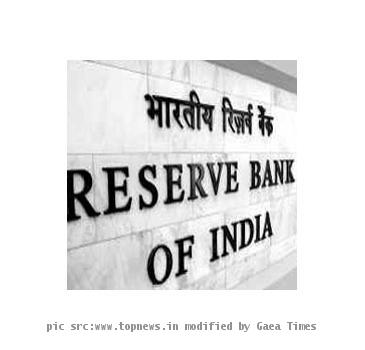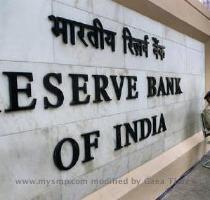RBI releases September issue of RBI Bulletin
By RBITuesday, September 14, 2010
|
The Reserve Bank of India today released the September issue of its monthly Bulletin (www.rbi.org.in/scripts/BS_ViewBulletin.aspx) . Apart from Current Statistics, the Bulletin includes the following articles: 1. Managing Inflation in the Post-Crisis Environment by Dr. Subir Gokarn, Deputy Governor 2. Quarterly Industrial Outlook Survey: April-June 2010 (50th Round) 3. Performance of Private Corporate Business Sector, 2009-10 4. Performance of Financial and Investment Companies, 2008-09 5. Monthly Seasonal Factors of Selected Economic Time Series 6. India’s Foreign Trade: 2010-11 (April-June) Highlights: Managing Inflation in the Post-Crisis Environment Inflation has been the key driver of monetary policy actions in recent past Dr. Gokarn’s article analyses the key drivers of inflation in Indian economy in the recent past and presents the key concerns that have influenced the sequence and magnitude of monetary actions. Main Messages The article argues that the management of current inflation requires both supply-side and demand-side approaches. Monetary policy has addressed the latter with a gradual, calibrated set of actions on both, interest rates and liquidity management. The pace and sequencing of the actions have been influenced by both, persistent global uncertainties and the need to support domestic recovery. This has required a balancing act between reining in inflationary expectations and adequate liquidity in the domestic financial system. Quarterly Industrial Outlook Survey: April-June 2010 (50th Round) Manufacturing Sector shows moderation but Employment Scenario shows Improvement and Some Industry Groups intend Higher Investments This article presents the survey findings of industrial outlook survey conducted by the Reserve Bank of India for April-June 2010 quarter. This is the 50th round in the series. It gives the assessment of business situation of companies in manufacturing sector, for the quarter April-June 2010 and their expectations for the ensuing quarter July- September 2010. The Reserve Bank of India has been conducting the quarterly industrial outlook surveys since 1998 with a view of gaining insight into the performance and prospects of the corporate sector engaged in manufacturing activities. The survey results are an important input in monetary policy making. Main Findings • The survey depicts that while remaining in the growth terrain, the manufacturing sector showed moderation both, for the current quarter (April-June 2010) as well as in the subsequent quarter (July-September 2010). • Demand conditions were somewhat subdued and backlog in pending orders had been substantially cleared. • Capacity utilisation did not show any improvement and therefore the manufacturers did not envisage any need for installing additional capacity. • The pressure on profit margins is expected to increase in the coming months even though selling prices are expected to increase. • The survey indicates a likely improvement in the employment scenario. As in the last few rounds of the survey, firms in fertilisers, transport equipment, pharmaceuticals and medicines, basic chemicals and electrical machinery are more sanguine about their business situation. • Industry groups, such as, basic metals and metal products, other machinery and apparatus, textiles and basic chemicals have expressed higher investment intentions for FY 2010-11. Performance of Private Corporate Business Sector, 2009-10 Size matters in growth and profitability The article analyses the performance of the private corporate business sector during 2009-10 based on abridged results relating to 2,629 non-government non-financial listed public limited companies and provides, among other things, a brief analysis by size and industry. Main Findings • The non-government non-financial companies that broadly represent the private corporate sector, witnessed a deceleration in aggregate sales growth in 2009-10 to about 12 per cent from the previous year’s relatively higher sales growth of about 17 per cent. • Net profits, however, recorded a noticeable rise of more than 28 per cent vis-à-vis a fall of 18.2 per cent in 2008-09. The improved profit growth was partly on account of the lower base of 2008-09. Apart from the base effect, improved net profits were also a result of lower rise in expenditure in relation to sales, decline in interest outgo and support from other income despite higher provisioning towards depreciation and tax. The margins showed improvement at operating, gross and net profit levels. • Analysis of companies with sales as size variable revealed that companies with sales of more than ` 1,000 crore dominated the overall corporate performance. This group reported the highest rise in sales. It was also observed that size influenced growth and profitability – larger the size, higher was the sales growth and also the gross profit margin. • In terms of sectoral breakdown, companies in manufacturing and IT sector recorded robust profit growth in the operating level itself. However, companies in services sector other than IT companies witnessed a subdued profit performance in 2009-10. • A high provision towards depreciation maintained by companies in manufacturing and services sector indicated commissioning of investments in fixed assets. • Industry-wise analysis revealed that sales rose for 26 out of 28 industry groups captured in the study, the exception being hotel and restaurants industry and chemical fertilisers and pesticides industry. • In terms of profitability, net profit margin improved for 19 industry groups. Performance of Financial and Investment Companies, 2008-09 External Source remained Major Source of Finance The study on Performance of Financial and Investment Companies, 2008-09 analyses the performance of non-Government financial and investment companies (other than banking, insurance and chit-fund companies) during the year 2008-09. The study is based on audited annual accounts of 1,215 companies during the period April 2008 to March 2009. The select 1,215 companies accounted for 49.5 per cent of total paid-up capital (provisional estimate supplied by Ministry of Corporate Affairs, Government of India) of all non-government financial and investment companies as on March 31, 2009 compared with 38.1 per cent in the previous study. Main Findings • The main income of select companies increased at a lower rate by 15.7 per cent in 2008-09, as against an increase of 40.6 per cent registered in the previous year. Though, total expenditure grew at a lower rate of 33.4 per cent in 2008-09 compared with 62.6 per cent in 2007-08, it was higher than the income growth. As a result, profits after tax declined by 7.9 per cent in 2008-09 as against 18.4 per cent growth registered in 2007-08 along with diminishing profitability to 35.0 per cent in 2008-09 from 43.4 per cent in 2007-08. • Business of the select companies expanded at a slower pace. They raised funds amounting to Rs.44,947 crore during 2008-09 as against Rs.86,348 crore raised during 2007-08. Though the share of external sources in total sources declined to 67.3 per cent during 2008-09 from 86.0 per cent during the previous year, it continued to be the major sources of finance. Monthly Seasonal Factors for Selected Economic and Financial Time Series of the Indian economy Seasonal variation in CPI for Industrial Workers higher than in overall WPI The study on Monthly Seasonal Factors for Selected Economic and Financial Time Series of the Indian economy is being regularly published in the Reserve Bank of India Bulletin since 1980. This article analyses the seasonal behaviour of 77 major macroeconomic series based on monthly data over the period from April 1994 to March 2010. Main Findings • The study observes that over the years, the intra-year seasonal variations of aggregate deposits and non-food credit of scheduled commercial banks exhibited almost similar movements. • Within the WPI-All Commodities group, WPI-Primary Articles indicated higher seasonal fluctuations as compared to WPI-Manufactured Products group. • Among the Food Articles group, the prices of ‘Fruits and Vegetables’ group exhibited high seasonal variation, during the reference period (April 1994 to March 2010). • The seasonal variations of CPI-Industrial Workers are higher than those of WPI-All Commodities. • A comparison of seasonal factors of IIP, according to the use-based classification, revealed that the seasonal variation was the highest in respect of capital goods. • Among the selected transport services indicators, the range of seasonal variations of ‘Revenue on Railway Freight Traffic’ was higher as compared to that of ‘Cargo Handled at Major Ports’. • Over the reference period, exports exhibited higher seasonal variations than non-oil import. • The intra-year seasonal variation in Broad Money (M3) and WPI-All Commodities had narrowed down from 2003-04 onwards. • The ranges of seasonal factors of bank credit (scheduled commercial banks) and Index of Industrial Production (IIP) exhibited similar movements over the reference period. India’s Foreign Trade: 2010-11 (April-June) Merchandise Trade recovers but Trade with Major Partners decline The article on India’s Foreign Trade: 2010-11 (April-June) reviews the performance of India’s merchandise trade during 2010-11 (April-June) on the basis of the data released by the Ministry of Commerce and Industry and Directorate General of Commercial Intelligence and Statistics (DGCI&S). The article also covers disaggregated commodity-wise and direction-wise analysis of India’s trade during the period 2009-10 (April-January). Main Findings • The article observes that during April-May (2010-11), India’s merchandise exports at US$ 33.0 billion posted a growth of 33.2 per cent over the corresponding period of previous year as against a decline of 33.3 per cent during April-May (2009-10). • Merchandise imports at US$ 54.7 billion recorded a growth of 39.5 per cent as against a decline of 34.3 per cent during April-May (2009-10). The oil and non-oil imports registered a growth of 68.5 per cent and 29.6 per cent in April-May (2010-11), respectively, as against a decline of 48.3 per cent and 27.6 per cent in April-May (2009-10). • The disaggregated data on commodity-wise merchandise trade as well as source and direction of exports and imports reveal that trade of all major commodity groups (namely, primary products, manufactured goods, petroleum products and bulk and non bulk import items) and with major trading partners (namely, OECD, OPEC, Eastern Europe and Developing Countries) registered a decline during April-December 2009 over the corresponding period of previous year. Alpana Killawala Press Release : 2010-2011/380 |

